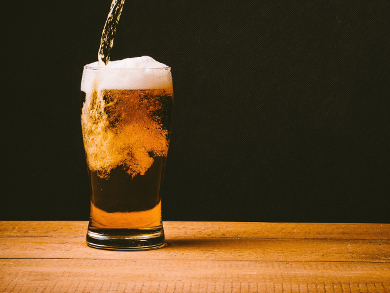On April 23, 1516, the Bavarian dukes Wilhelm IV. and Ludwig X. decreed that “the only ingredients used for the brewing of beer must be barley, hops, and water”, a regulation called the “Reinheitsgebot” or beer purity law. Breaking this law was punished by confiscation of the offending beverage.
The law kept undesirable and unhealthy additives out of beer. The brewers at the time added contaminants such as soot, sawdust, and even poisonous henbane in an effort to preserve the beer. Another theory is that the law was intended to preserve wheat and rye, grains desperately needed for bread in a time of food scarcity, and replace them with barley.
Variations of the law spread throughout Germany over the years, and a less strict implementation is still in place today, regulating which beverages can legally be labeled and sold as “beer”. Yeast was added to the list of allowed ingredients once its role in fermentation had been understood. While many breweries still use their adherence to the Reinheitsgebot in marketing, there has also been opposition: according to critics of the law, it limits the variety of beers in Germany and stifles the growth of small craft brewers.
Be it “pure” in the legal sense or a specialty such as spiced beer and cherry-flavored variants, beer remains a very popular beverage worldwide. While Germany still produces (and consumes) a lot of beer, in absolute terms its production has been overtaken by both China and the United States (see Table 1). Large international brewery groups dominate the market, with the top three in 2012 headquartered in Belgium (Anheuser-Busch InBev), the United Kingdom (SABMiller), and The Netherlands (Heineken) [2]. They operate production sites not only in Europe, but, e.g., in Brazil, the US, and China.
|
References
- [1]
 Beer,
Beer,
Hans Michael Eßlinger, Ludwig Narziß,
in Ullmann’s Encyclopedia of Industrial Chemistry, Wiley-VCH, Weinheim, 2002.
DOI: 10.1002/14356007.a03_421.pub2 - [2] Market Leaders and their Challengers in the Top 40 Countries in 2012,
Barth-Haas Group, Germain Hansmaennel,
Barth Report 2013.
Also of Interest
- Alcohol – Not Just for Drinking,
Vera Koester,
ChemViews Mag. 2015.
DOI: 10.1002/chemv.201500073
A topical look back on the best of ChemistryViews.org to celebrate the 5th anniversary of the news and information service - The Oktoberfest Rearrangement,
Klaus Roth,
ChemViews Mag. 2013.
DOI: 10.1002/chemv.201300098
A closer look at the chemical role hops play in the beer-brewing process shows how beer owes its marvelous flavor to a great deal of chemistry - Chemistry of a Hangover – Alcohol and its Consequences,
Klaus Roth,
ChemViews Mag. 2011.
DOI: 10.1002/chemv.201000074
How can a tiny molecule like ethanol be at the root of so much human misery?




